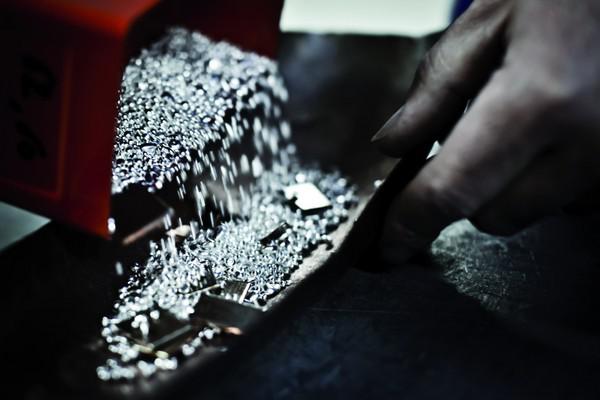The smelting of gold. How do you get yellow, white or pink gold?
During several posts (non-consecutive so as not to tire you) I am going to take a tour of the trades of jewelry and watchmaking. Let's start with the foundry. Can you imagine making gold? This is the process.
Some important jewelery or watchmaking firms (such as Chopard, which has given me this material) have their own gold foundry: each house makes its own alloys from fine gold ingots. 18-carat gold or 750 thousandths (that is, 750 grams of pure gold per kilo of material) is highly valued in jewelry because, unlike 24-carat gold, which is too malleable, it represents the best balance between resistance, sparkles and content. of pure gold. Ideal for setting precious stones, it also withstands the passage of time and the small knocks of everyday life.
Gold is manufactured following an extremely precise process to the letter. Depending on the desired alloy (white, pink or yellow gold), the smelter places the necessary fine metals in a crucible of graphite and clay. To produce rose gold, for example, you'll need a certain amount of 24-carat fine gold, silver, and copper, while for white gold you'll add palladium.
Now you will understand why over time, as the white gold piece wears, the yellow tone of the base gold appears. The target returns to be the initial when rolling the piece.
The casting process begins when the container is in the furnace. The heat of this varies depending on the type of alloy. Pink gold, for example, requires a temperature of 1000°C. The materials go into fusion. ALL A SHOW!!! In less than thirty minutes, a glowing red liquid pulsates at the heart of the crucible. At the end of baking it is poured, like lava, into a mass of steel.

.@drewtoothpaste this DIY article might interest you: "How to Write a DMCA Take Down Request" http://t.co/f0EcPMIJFw@qx @Ogilvy
— A.Lizard Thu Jun 12 09:39:13 +0000 2014
The ingot obtained is always composed of 750 grams of pure gold, the weight indicated by the standard. The gold is then rolled by the artisans into a long and thick band of 12 mm. At this time, a sample called "carrot" is cut, which is weighed and numbered to be sent to the Precious Metals Control of each country, so that the alloy can be analyzed.
Only after receiving the metal inspection certificate can the alloy be used. But for this, the metal must be baked several times at an average temperature of 600° to return the ingot to its initial structure.
Then it can be laminated for the last time, to give it the thickness required by the uses to which it will be destined.
New technologies appear in the trade but human savoir-faire remains fundamental. These 21st century alchemists make it possible for us to continue dreaming of colored gold. What is your favorite? Do you think yellow is more flattering than pink? Does white gold suit your style more? I await your comments impatiently.









1589